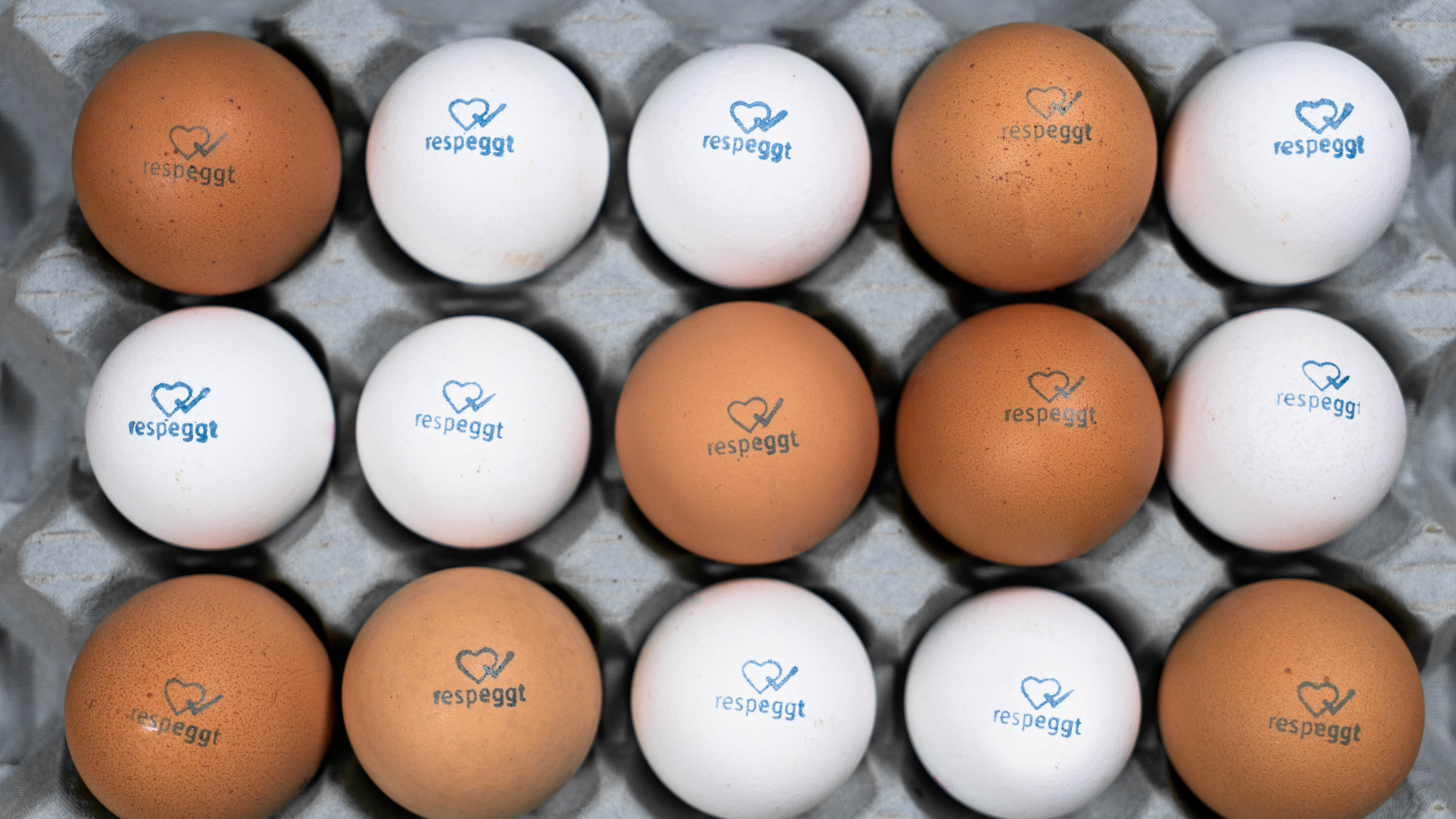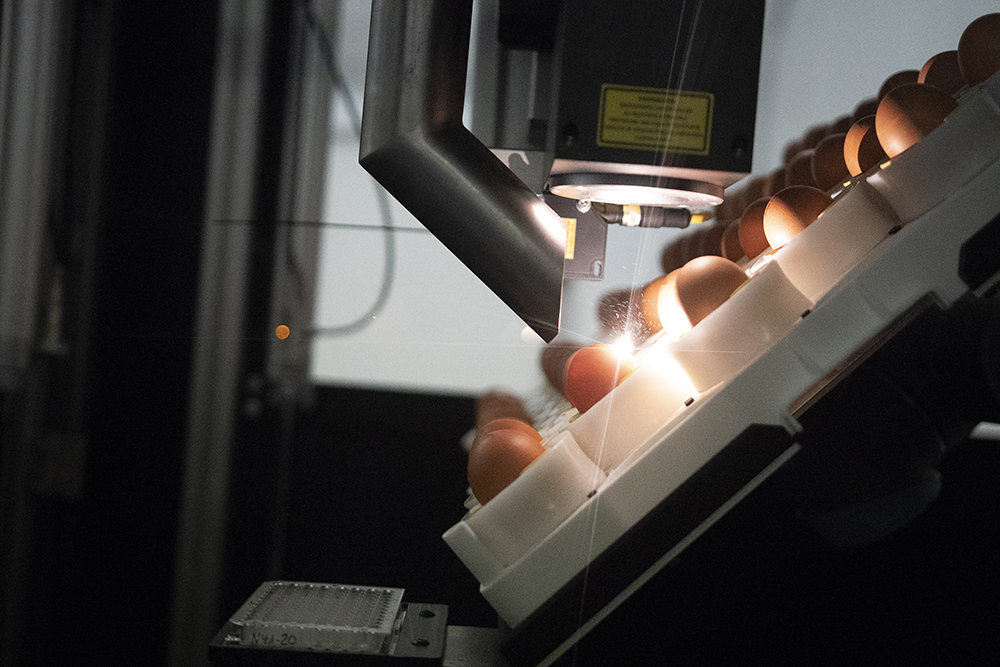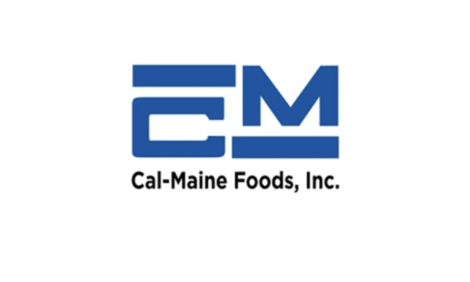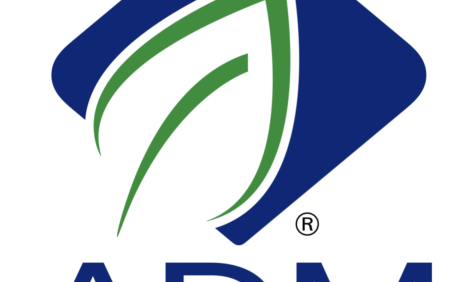



A market-ready method for gender identification in hatching eggs
GERMANY, 8 November 2018 - On 8 November 2018, the Federal Minister of Food and Agriculture, Julia Klöckner, together with Dr Ludger Breloh, SELEGGT Managing Director and Jan Kunath, Deputy CEO of REWE Group, presented in Berlin the now market-ready procedure for gender identification in hatching eggs: the SELEGGT processIn Germany alone, around 45 million male chicks from laying hen breeds are killed every year. Male chicks of these breeds do not lay eggs and do not fatten enough meat. Due to the high costs, the male chicks, the so-called layer brother cocks, are often not reared. In order to stop the chick culling, the German Federal Ministry of Food and Agriculture (BMEL) has funded the development of viable solutions for gender identification in hatching eggs with approximately five million euros so that male chicks do not have to be incubated.
Starting this November in 223 REWE and PENNY stores in Berlin, customers will be able to buy the first table eggs from laying hens that went through the new process as hatching eggs. REWE Group is already planning the national market launch of the so-called free-range respeggt eggs in all around 5,500 REWE and PENNY stores in Germany for the upcoming year. At the same time, SELEGGT is developing a business model to make the technology available to the industry as a cost-neutral service. Germany thereby initiates the new method, which can put an end to chick culling in hatcheries. The patented process will be available to the first hatcheries from 2020.

Federal Minister of Food and Agriculture Julia Klöckner: “This is a great day for animal welfare in Germany! In this way we will set the pace in Europe. My ministry has provided around five million euros to support research for promising methods of gender identification in hatching eggs. With the market readiness of the process presented today, Germany is a pioneer. Now it is possible to identify the gender of the chicks in the hatching egg through a needle-tip tiny hole. Male hatching eggs no longer need to be incubated and killed immediately after hatching.
“The scientists did extraordinary work and I am pleased to hear that there are partners in the industry who implement this process and make it generally accessible. For the consumer it is also a significant step towards more animal welfare.
“It is also an opportunity for the hatcheries in Germany. Furthermore, it is an alternative for hatcheries that enables them to continue producing in Germany–while doing more for animal welfare at the same time. Because once the process is made available to all and the hatcheries have implemented the process, there will be no reason and no justification for chick culling. Regardless it is important not to lose sight of the dual-use breed and to support it.”
Dr Ludger Breloh, Managing Director of SELEGGT: “The Ministry's funding was tremendously important to us, especially during the research phase at the University of Leipzig. I would like to express my sincere gratitude to the ministry for this support. Despite all the euphoria, we still have a long way to go. We will work vigorously from our side to make the SELEGGT process available to the hatcheries in a cost-neutral system. Next year, we intend to move from market readiness to start of production. At the same time, I believe the development and funding of the dual-use breeds to be
equally important. Until then, gender identification in hatching eggs could serve as gap-bridging technology.”
Jan Kunath, the Deputy Chief Executive Officer of REWE Group: “REWE Group promotes and funds change processes in the industry that take social demands into account – even beyond those outside the company’s own business divisions. For this reason, REWE Group set up SELEGGT GmbH, a joint venture whose mission is to conduct basic research on endocrinological gender identification in hatching eggs until market-ready solutions are developed. I am therefore all the more pleased that, as of today, we can offer customers in our REWE and PENNY stores in Berlin an alternative not only in regard to the husbandry form of chickens. Concerned customers can now actively help to put an end to the practice of male chick culling through their shopping behaviour. I strongly believe that the extra price of a few cents per egg carton is well invested. Throughout next year, our customers will be able to buy free-range respeggt eggs gradually throughout Germany. As a company, we are setting an example that sustainability and animal welfare are fundamental principles for us. In this context, I would also like to mention our very successful initiatives in which both male and female chicks are reared – “Spitz&Bube” at REWE and “Herzbube” at PENNY. We offer a selection of eggs to our customers like no other retail company, one that ranges from classic free-range eggs to free-range respeggt eggs to eggs from layer brother fattening initiatives”.
SELEGGT: Non-invasive gender identification in hatching eggs

In the SELEGGT process, a laser is used to burn a hole of no more than 0.3 millimetres into the hatching egg shell. Afterwards, a small amount of allantois fluid is extracted through a non-invasive procedure. Hence the interior of the hatching egg is untouched and remains safe and sound. In the next step, the allantois fluid is placed on a patented marker outside the hatching egg. Through a change in colour, this marker will indicate whether the sex-specific hormone estrone sulphate can be detected in the hatching egg. If detected, a female chick is developing in the hatching egg. After the gender identification process, the hatching egg does not need to be sealed as the inner membrane mends itself and closes the tiny hole from within. Consequently, only female chicks hatch on the 21st day of the incubation. No estrone sulphate indicates a male hatching egg, which is separated and processed into high-quality animal feed. The SELEGGT process has an accuracy rate of around 98 percent.
Seamless traceability will be provided by innovative blockchain technology. Every hatchery equipped with the SELEGGT process, rearing farm, laying farm or egg-packing centres enter the relevant information into the blockchain via app. The data is stored remotely, may be viewed by all members of the supply chain and cannot be altered. This ensures a high level of security throughout the entire supply chain.
As reported by the German Federal Ministry for Nutrition and Agriculture and SELEGGT










